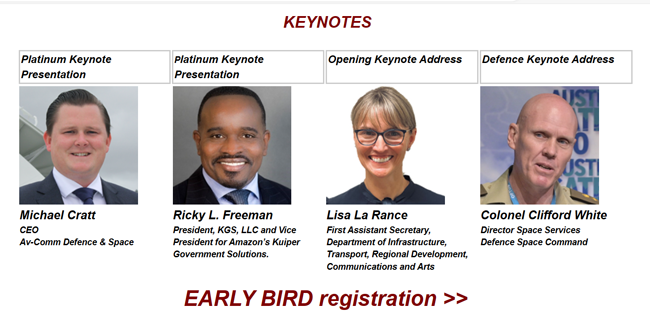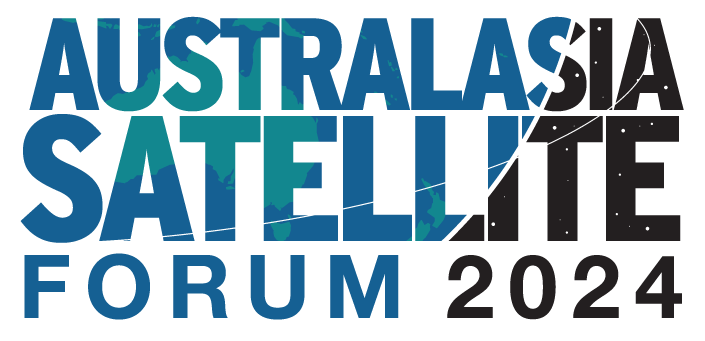|
Australian Gov’t led
working group hails LEOsat potential in digital
inclusion, USO delivery and resilience
A working group of federal
government agencies and satellite companies has
recommended that LEOsat technology be embraced to boost
digital inclusion, supply universal services and improve
telecommunications resilience.
The first chair’s report of the Low
Earth Orbit Satellite Working
Group is to be released later
today, making six recommendations for government.
The report, written by former
department deputy secretary Richard Windeyer, recommends
that government:
| Explore the role of LEOsats to
narrow the First Nations digital gap, and identify how
best to remove barriers to providing prepaid satellite
services to consumers;
| Consider how new and emerging
technology may be able to deliver a modern Universal
Service Obligation, and | Monitor developments with
direct to handset LEOsat services, and consider their
role in the continuity of service during disasters.
The working group will also
continue to meet through 2024, under new deputy
secretary James Chisholm.
Communications minister Michelle
Rowland said that the government was committed to
leveraging the latest technologies and would consider
the recommendations. She said: “I thank the working
group for the constructive manner in which they
approached these important discussions, particularly in
relation to closing the First Nations digital inclusion
gap. The government will continue to work with industry
and consumer groups to ensure the regulatory framework
delivers the best outcomes for Australians.”
In the report, Windeyer writes:
“LEOsat constellations are distinct from satellites in
other orbits in that they are significantly closer to
the Earth, allowing for lower latency transmissions and
less signal propagation loss. These factors have allowed
consumers to access broadband services which are more
comparable on many key metrics to services supplied over
ϐibre optic and other ϐixed networks.
Owing to the global nature of most
LEOsat constellations, coverage can be ubiquitous.”
He also observes: “There is signiϐicant
innovation occurring in the ϐield of LEOsats.
Rapid developments in the market
are bringing choice and a step change in broadband
capability to businesses and households in regional and
rural Australia. In addition, the capability for
satellites to connect directly to mobile handsets
(direct-to-device or D2D capability) is developing.”
“Developments in mobile standards,
such as 3GPP releases 17 and 18, supporting
non-terrestrial mobile networks also have positive
implications for regional, rural and remote
communications in Australia. Devices are already
available in Australia supporting basic messaging
services but further enhancement of LEO-enabled networks
is likely to support greater capabilities, such as
voice, data and video, in coming years.”
Regarding First Nations
communities, the report recommends a trial of LEOsat
broadband connectivity, including non-LEO satellite
solutions that may include aggregating demand and
providing connectivity through subsidised gateways such
as WiFi hotspots or 4G and 5G private networks. The
report emphasises that close consultation with First
Nations communities would be required and that
consideration be given to the power requirements of
antenna, given potential rain fade factors.
The report also sees a need for
prepaid delivery models, pointing out that disadvantaged
Australians, particularly in First Nations communities,
often rely on WiFi hotspots such as those hosted by
local councils and pre-paid mobile phone plans for
connectivity, rather than fixed residential connections
or post-paid mobile phone plans that are more typical in
the general population. “Barriers to offering pre-paid
services should be identiϐied and recommendations
provided to the” Department, the report said.
In terms of USO, the group noted
there may be some trade-offs associated with using
LEOsats to provide universal service to regional, rural,
and remote Australians due to the different
technological beneϐits and limitations, but there was
scope that overall service could be improved.
The report recommends “as the
government considers a modern universal service
framework, consideration should be given to the future
role of LEOsats. The inclusion of LEOsats should only
follow extensive testing of their suitability.”
D2D SEEN AS TRANSFORMATIONAL: The
group was also bullish about the potential of
direct-to-mobile device communications, describing its
coverage impacts as “transformational.”
It says “the LEOsat D2D capability
is growing quickly, with a commercial deal aready
established in the Australian market. Current regulatory
settings appear to capture the most likely LEOsat
service delivery setups and the usual telecommunications
regulatory settings around competition and access apply
to LEOsats. There are some edge scenarios that should be
examined closely. Developments in the market should be
monitored to ensure that regulatory and policy settings
continue to be fit for purpose and enable this market to
develop.”
The report also sees related
benefits in resilience, noting that “LEOsats clearly
have a role in assisting in emergency situations, and
the Government should consider this capability in this
space. LEOsats are also becoming increasingly relevant
to the emergency calling space, with Apple for example
providing an emergency SOS service through its concierge
triaged service. The government should consider whether
regulatory settings are fit for purpose to encourage
greater use of LEOsats for emergency communication
purposes.”
The working group includes
representatives from the Department, Australian
Communications and Media Authority and Australian Space
Agency, as well as the First Nations Digital Inclusion
Advisory Group.
Industry was represented by Amazon
Project Kuiper, Commpete, Communications, Alliance,
Echostar Global, Fleet Space, Inmarsat, Intelsat,
IPSTAR, Lynk Global, Myriota, NBN Co, Omnispace, OneWeb,
Optus, Pivotel, SES/O3b, Speedcast, Starlink, Telesat,
Telstra, TPG, Viasat and Vocus.
Grahame Lynch, Commsday
Hear more on this issue and
other key developments at ASF2024
Australasia Satellite
Forum 2024
Contact: kfrench@talksatellite.com


Fullerton Hotel, Sydney
3-4 June 2024
TWO FULL DAYS - Where Satellite Leaders Speak!
Over 50 Top Quality Speakers
EarlyBird Registration >>>

Fullerton Hotel, Sydney
3 & 4 June 2024
SAVE
THE DATE
|
.png)